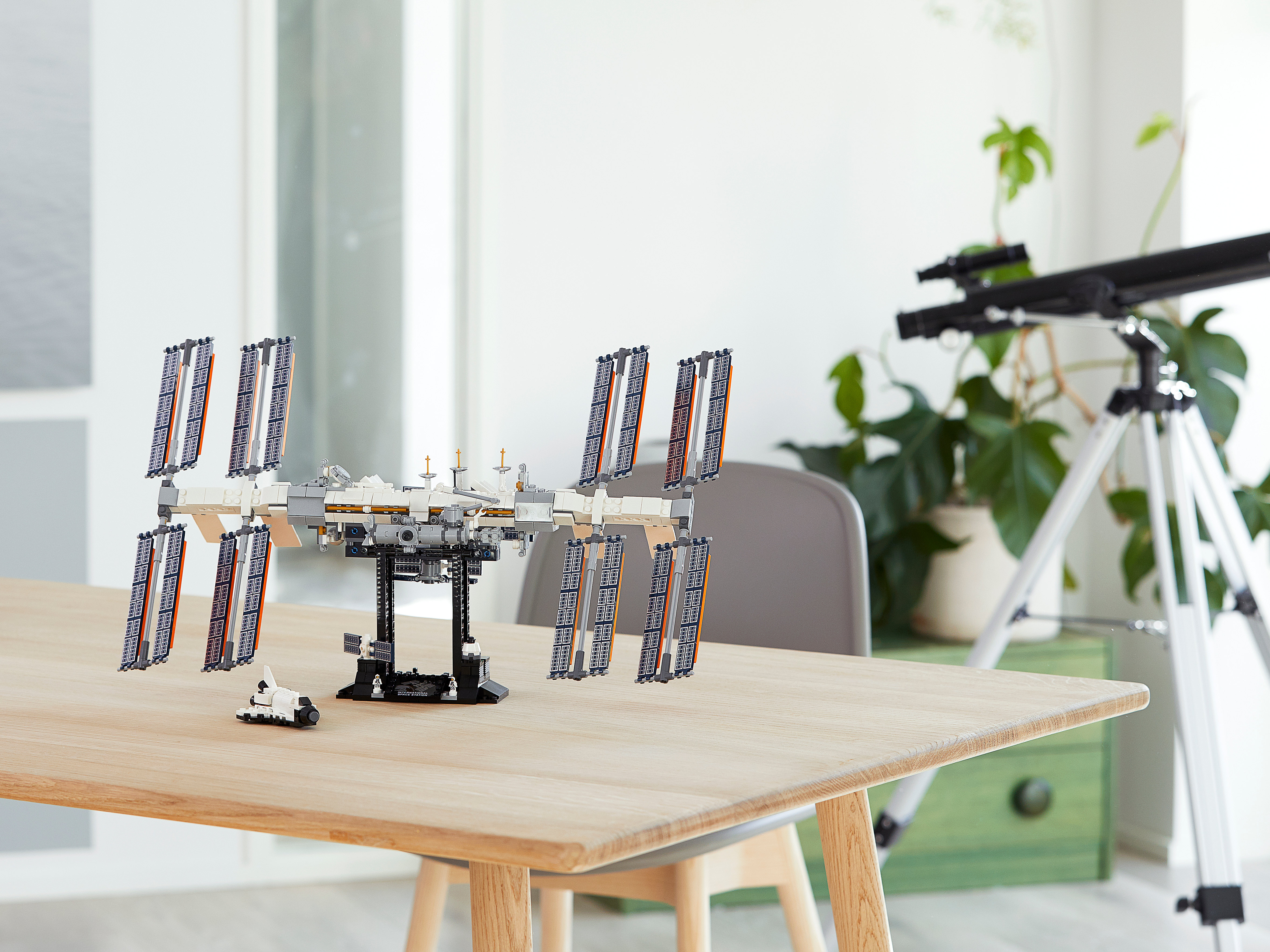- Lego is releasing an International Space Station set.
- A marketing stunt carried a Lego replica of the International Space Station into the stratosphere.
- The new set commemorates the 20th year that humans have lived on the space station.
- Visit Business Insider’s homepage for more stories.
A team of hardworking engineers just launched another International Space Station high above the Earth – but this one was about 2.5 feet tall and built from hundreds of plastic bricks.
The model station is Lego’s newest set. It’s slated to hit stores February 1 to commemorate the 20th anniversary of humans’ presence aboard the space station. To drum up excitement, Lego released a video on Monday showing high-altitude balloon carrying the mini station about 32 miles (50 km) above the Earth as the sun sets and stars emerge.
“An out-of-this-world building experience is coming!” Lego wrote on Twitter.
An out-of-this-world building experience is coming! 🌙⭐️ The LEGO International Space Station is available February 1st! https://t.co/DZwnyE12EN pic.twitter.com/rcNGTeqC2H
— LEGO (@LEGO_Group) January 21, 2020
The set has 843 bricks and features miniature versions of ISS parts that, according to Lego, have been verified for authenticity by NASA experts. A movable robotic arm mimics the ISS's Canadarm, and the set also features capsules, modules, docks for shuttles and spacecrafts, and access hatches for Lego astronauts.

Lego even created adjustable mock-solar-panel parts for the model to match the ISS' energy source.
The Lego space station

The International Space Station is an orbiting laboratory about the size of a 5-bedroom house. It was put together in space in pieces; the first piece launched in 1998 on a Russian rocket. The station started housing long-term residents in 2000, and those astronauts continue working to add new parts.
The idea for the Lego set, which will sell for $69.99, came from a fan as part of a crowdsourcing initiative called Lego Ideas. Members can submit plans for new product lines and vote on other users' concepts. If the company goes forward with the idea, the creators get 1% of sales and licensing revenue.
The community also birthed the best-selling "Women of NASA" toy set, which features four pioneering women from the space agency.
German engineer Christoph Ruge conceptualized the International Space Station collection. He told Lego that he'd built a larger model out of other Legos years before.

"I was amazed to see how ingenious it was designed. Especially the totally modular concept is like playing with Lego bricks in space," Ruge said of the new Lego set. "They are indeed rearranging the modules of the station up there every now and then - and that's what you can do with the model down here as well!"

Lego's high-altitude balloon stunt
Lego's high-altitude demonstration went more smoothly than past marketing exercises that also used balloons.
A promotion for the Samsung Galaxy S10 attempted to use high-altitude balloons to launch a Cara Delevigne selfie into space in October, but the 'SpaceSelfie' balloon crashed into a Michigan couple's backyard.
"It looked like a satellite," homeowner Nancy Mumby-Welke told NBC News at the time.
Both Samsung and Lego's demonstrations relied on unmanned high-altitude balloons, which are usually filled with hydrogen or helium. The balloons can rise to between 11 and 23 miles (18 and 37 kilometers) above sea level.
